
Neapolitan sauce, also called Napoli sauce or Napoletana sauce, is the collective name given to various basic tomato-based sauces derived from Italian cuisine, often served over or alongside pasta.

Pizza is a traditional Italian dish typically consisting of a flat base of leavened wheat-based dough topped with tomato, cheese, and other ingredients, baked at a high temperature, traditionally in a wood-fired oven.
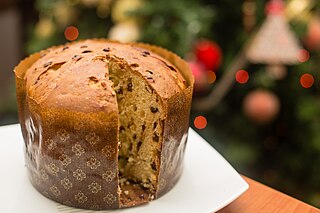
Panettone is an Italian type of sweet bread and fruitcake, originally from Milan, Italy, usually prepared and enjoyed for Christmas and New Year in Western, Southern, and Southeastern Europe, as well as in South America, Eritrea, Australia, the United States and Canada.
Neapolitan means of or pertaining to Naples, a city in Italy; or to:

Zeppola, sometimes called frittelle, and in Sardinia italianized zippole or zeppole sarde from the original Sardinian tzípulas, is an Italian pastry consisting of a deep-fried dough ball of varying size but typically about 4 inches (10 cm) in diameter. This fritter is usually topped with powdered sugar, and may be filled with custard, jelly, cannoli-style pastry cream, or a butter-and-honey mixture. The consistency ranges from light and puffy, to bread- or pasta-like. It is eaten to celebrate Saint Joseph's Day, which is a Catholic feast day.

Neapolitan is a Romance language of the Italo-Romance group spoken in Naples and most of continental Southern Italy. It is named after the Kingdom of Naples, which once covered most of the area, since the city of Naples was its capital. On 14 October 2008, a law by the Region of Campania stated that Neapolitan was to be protected.
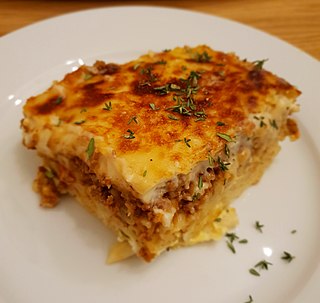
Pastitsio is a Greek baked pasta dish with ground meat and béchamel sauce, with variations of the dish found in other countries of the Mediterranean Sea.

A Swiss roll, jelly roll, roll cake, cream roll, roulade or Swiss log is a type of rolled sponge cake filled with whipped cream, jam, icing, or any type of filling. The origins of the term are unclear; in spite of the name "Swiss roll", the cake is believed to have originated elsewhere in Central Europe, possibly Austria or Slovenia. It appears to have been invented in the nineteenth century, along with Battenberg cake, doughnuts, and Victoria sponge. In the U.S., commercial snack-sized versions of the cake are sold with the brand names Ho Hos, Yodels, Swiss Cake Rolls, and others. A type of roll cake called Yule log is traditionally served at Christmas.

Spaghetti alla puttanesca is a pasta dish invented in Naples in the mid-20th century and made typically with tomatoes, olive oil, olives, anchovies, chili peppers, capers and garlic, with vermicelli or spaghetti.

In many European countries, particularly in Central and Eastern Europe, there are various traditions surrounding the use of bread during the Easter holidays. Traditionally the practice of eating Easter bread or sweetened "communion" bread traces its origin back to Byzantium, Eastern Catholicism and the Orthodox Christian church. The recipe for sweetened or "honey-leavened" bread may date back as far as the Homeric Greek period based on anecdotal evidence from classical texts.
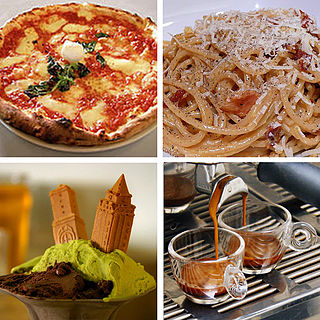
Italian cuisine is a Mediterranean cuisine consisting of the ingredients, recipes and cooking techniques developed in Italy since Roman times and later spread around the world together with waves of Italian diaspora. Some of these foods were imported from other cultures. Significant changes occurred with the colonization of the Americas and the introduction of potatoes, tomatoes, capsicums, maize and sugar beet—the latter introduced in quantity in the 18th century. It is one of the best-known and most appreciated gastronomies worldwide.

Zuppa inglese is an Italian dessert layering custard and sponge cake, perhaps derived from trifle.

A crostata is an Italian baked tart or pie. The earliest known use of crostata in its modern sense can be traced to the cookbooks Libro de Arte Coquinaria by Martino da Como, published c. 1465, and Cuoco napolitano, published in the late 15th century, containing a recipe titled Crostata de Caso, Pane, etc..
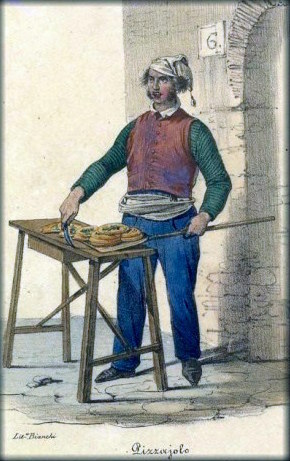
The history of pizza begins in antiquity, as various ancient cultures produced flatbreads with several toppings.

Neapolitan cuisine has ancient historical roots that date back to the Greco-Roman period, which was enriched over the centuries by the influence of the different cultures that controlled Naples and its kingdoms, such as that of Aragon and France.

Guappo is a historical Italian criminal subculture and informal term of address in the Neapolitan language, roughly analogous to or meaning thug, swaggerer, pimp, braggart, or ruffian. While today the word is often used to indicate a member of the Camorra, a Mafia-type organisation in the region of Campania and its capital Naples in Italy, the guapperia predates the modern Camorra and was originally a different and separate criminal subculture that considered itself very much independent of the Camorra.

Christmas in Italy begins on 8 December, with the Feast of the Immaculate Conception, the day on which traditionally the Christmas tree is mounted and ends on 6 January, of the following year with the Epiphany, and in some areas female puppets are burned on a pyre, to symbolize, along with the end of the Christmas period, the death of the old year and the beginning of a new one. 26 December, is also a public holiday in Italy. The Italian term Natale derives from the Latin natalis, which literally means 'birth', and the greetings in Italian are buon Natale and felice Natale.
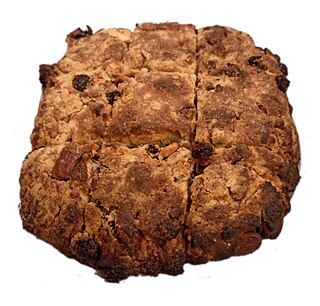
The pizza dolce di Beridde, also known as the pizza ebraica or diamanti romani, is an unleavened sweet bread typical of the city of Rome. This traditional dessert is prepared by the Roman Jewish community on the occasion of a Brit milah.

Easter in Italy is one of the country's major holidays. Easter in Italy enters Holy Week with Palm Sunday, Maundy Thursday, Good Friday and Holy Saturday, concluding with Easter Day and Easter Monday. Each day has a special significance. The Holy Weeks worthy of note in Italy are the Holy Week in Barcellona Pozzo di Gotto and the Holy Week in Ruvo di Puglia.


















